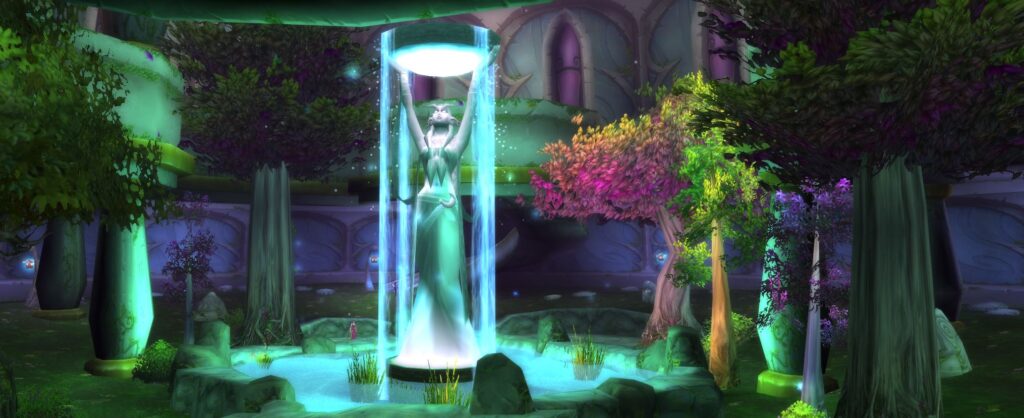- Author: Oxykitten
- Date: April 28, 2022
- Updated: April 28, 2022
- Expansion: TBC Classic
Welcome to our Feral Tank rotation and gameplay guide for TBC Classic. This guide will outline how to play a bear tank to best fulfill your role in a raid and maximise overall performance.
Rotation
Single Target Rotation
- Mangle on cooldown
- Lacerate if less than 5 stacks, or to refresh stacks if less than 6 seconds remaining
- Swipe
- Maul if rage will otherwise go to waste (cap at 100)
Mangle: This is your strongest threat ability. It not only deals a lot of damage and scales well with attack power, but also has a multiplicative threat modifier. It is on a 6 second cooldown, and should be prioritised over all other abilities. Note that a 6 second cooldown perfectly fits 4 global cooldowns within it, so the rotation will always boil down to Mangle > Cast > Cast > Cast > Mangle > repeat. If you can count to 3, you can play a Feral tank!
Lacerate: This is a stacking bleed debuff, with bonus threat on initial application. It also has a low rage cost, and refunds some rage on misses, dodges and parries (unlike Swipe). This makes Lacerate a strong filler ability while Mangle is on cooldown. You should stack Lacerate to 5, and then make sure to keep it from falling off.
Swipe: Unlike in Classic, Swipe now scales with attack power, making it a decent filler ability. If you have raid gear and have strong attack power buffs, like Battle Shout or Unleashed Rage, you should use Swipe instead of Lacerate when already at 5 stacks of Lacerate
Maul: This may seem like a strong ability, and indeed in most encounters the majority of a druid’s threat will stem from Maul. However, it is very costly; it not only costs rage but as it *replaces* a melee swing, it prevents that melee swing from generating rage. In addition, using it is only as valuable as the difference between a maul and a normal melee. Overall, maul is the least efficient ability, in terms of threat per rage. Consider, though, that Maul does not cost a Global Cooldown like the other abilities mentioned. Therefore, it can be used in addition to other abilities, as long as you have the rage to sustain it. You should consider it a “rage dump” ability to only use when you have excess rage.
Multi Target Rotation
- Swipe
- Mangle any loose target
- Growl any loose target
- Feral Charge any loose target
- Bash any loose target
- Challenging Roar if desperate
- Maul to use excess rage
Feral tanks struggle with AoE threat, and should never be assigned to do so in a raid environment. When it comes to tanking 3 or more targets in a dungeon, you should follow this rotation. Using a nameplate addon which shows whether enemies are targeting you, such as Threatplates, is essential. Swipe generates the most threat across all targets. You should also swap targets between each melee swing to distribute your threat evenly. However, if you notice you are about to lose threat on one target, using Mangle on it will help to keep aggro. Next, you can use Growl to keep a target on you.
If Mangle and Growl are on cooldown, it becomes a question of controlling enemies to keep your party members alive. Feral Charge immobilises the target, keeping them away from your ranged DPS or healer. Bash is on a longer cooldown, but gives you time for mangle or Growl to come off cooldown. Finally, Challenging Roar forces all nearby targets to attack you for a few seconds, but is on a 10 minute cooldown, and does not affect your threat on these targets after the debuff wears off.
Gameplay
In most raid environments, a Feral druid’s role is to offtank. This is because Druids can enter Cat Form and do respectable damage while not tanking, whereas Paladins and Warriors do very little damage when not tanking. Despite druids making very strong main tanks, playing an offtank role increases overall raid DPS. In this role, you will tank on trash packs and may tank on some bosses which require multiple tanks. However, most bosses in TBC only require one or two tanks, so learning how to optimise your cat DPS performance is a major aspect of Feral gameplay. I am working on DPS guides to help with this.
More generally, tank gameplay is engaging and interesting. Tanks carry a lot of responsibility for how smooth a raid is; tanks set up pulls, and therefore set the pace of the raid. They should gear and consume responsibly, as a tank death often means a wipe which significantly slows down the raid. Furthermore, rotation mistakes may affect their threat generation, which every DPS in the raid will notice. A lot of tank gameplay is based on mob positioning, for example facing mobs away from the raid to avoid cleave mechanics, and avoid melee DPS getting parried (which reduces raid DPS and also causes parry haste, whereby an enemy’s next melee swing is sped up following a parried attack; this can be deadly for a tank). Tanks often need to play around boss mechanics, and therefore generally need to know raid mechanics better than other players (who just need not to stand in fire). While all that may seem daunting, it means tank gameplay is always interesting, even with a simple rotation!
Thank you for taking the time to read our Feral Tank Rotation and Gameplay Guide for TBC. I hope it was helpful, and if you have any questions or suggestions please feel free to leave a comment below, or find me as Oxy on the Druid Classic Discord.







